There is different classification of Indian Paintings like Mural paintings, Miniature paintings and Folk paintings. Basically, the folk paintings were made using the locally available resource and it represented the local art of particular regions. There are several regional folk paintings developed in India and are very famous in modern-day as well.
Also Read : Bengal School of Miniature Paintings
Miniature Paintings – Techniques and Early Miniature
Madhubani Paintings
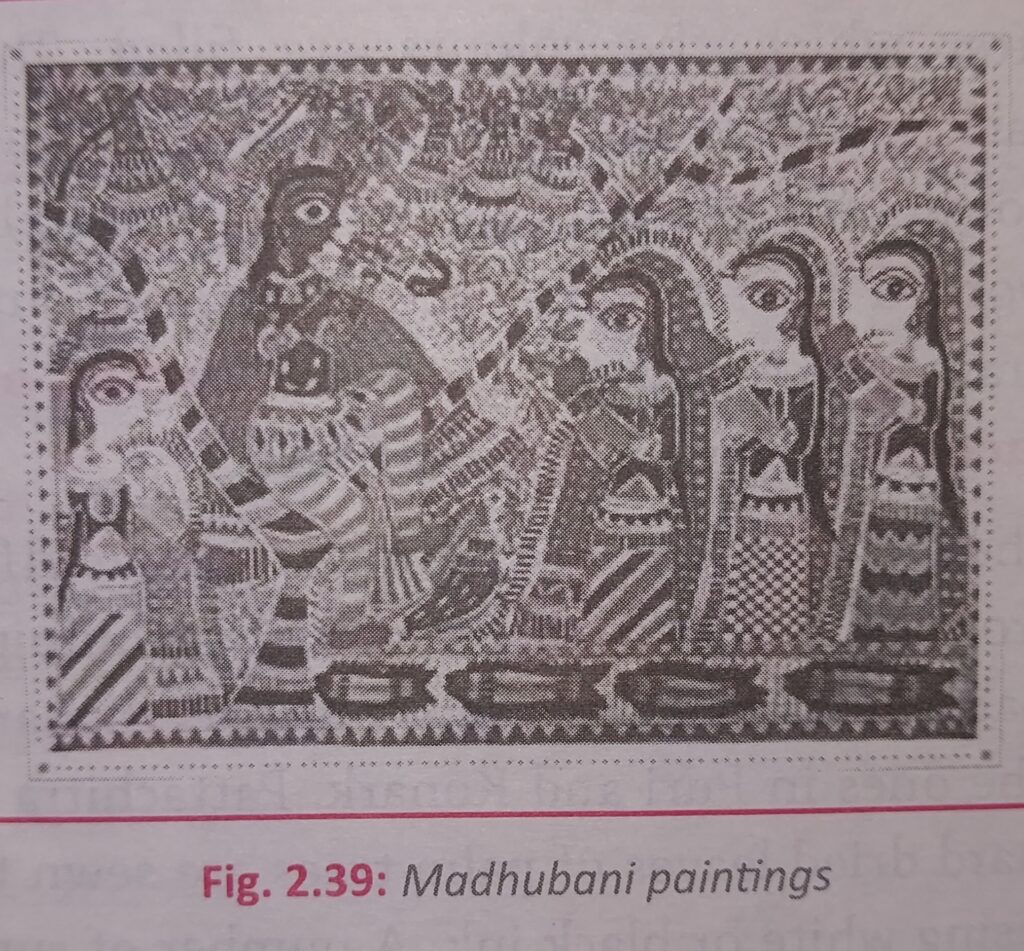
Madhubani paintings are also known as the Mithila paintings which were traditionally done by women of villages around Madhubani town of Bihar. These paintings have a common theme drawn from religious motifs of Hindus including Rama, Durga, Shiva etc. Traditionally, these paintings painted on the walls using rice paste and vegetable colors on a base of cow dung and mud. These are two-dimensional and double-bordered paintings.
Patua and Paitkar Paintings
Patua is a traditional art of Bengal which tells the auspicious stories of Gods and Goddesses. These paintings done on the pats or scrolls and traditionally painted on clothes. These paintings usually used to comment on political and social issues. Paitkar paintings are also scroll paintings which are practiced by tribals of Jharkhand. These paintings have cultural association of Ma Mansa, popular goddess among tribals.
Pattachitra Paintings
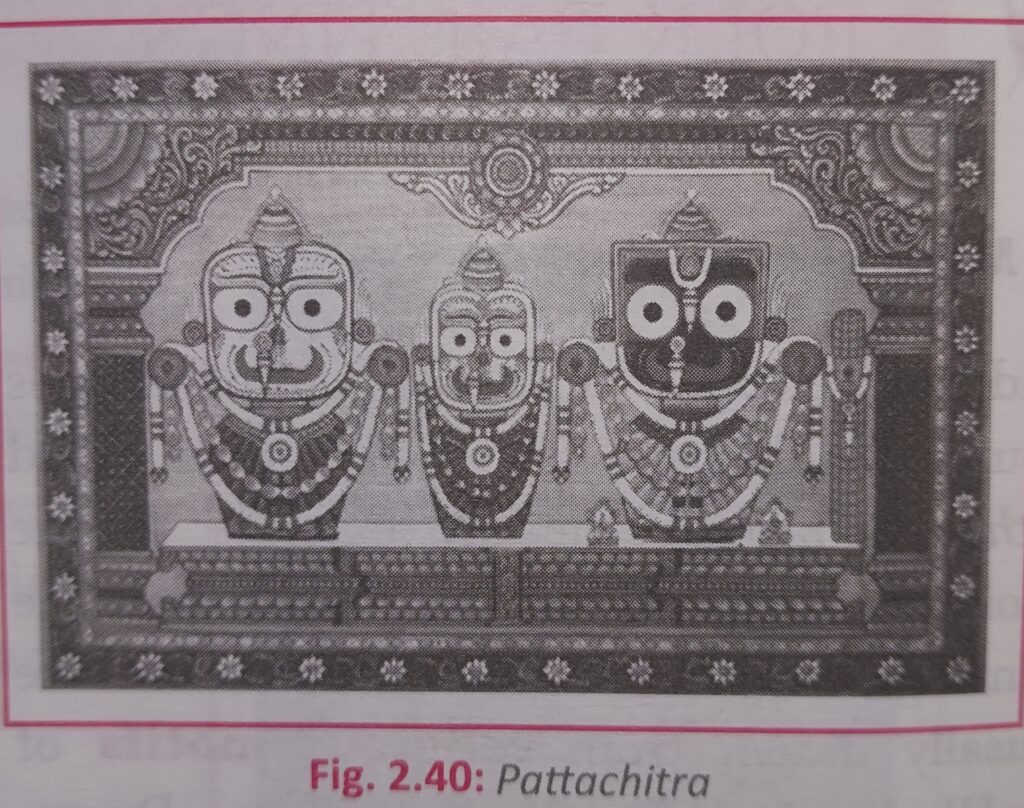
Pattachitra paintings are mixture of classical and folk elements and these paintings belongs to state of Odisha. Cloth used as base of these paintings and no pencil or charcoal used to draw the outlines, instead of that yellow and red colors uses. These paintings are inspired form the Jagannath and Vaishnava cults, sometimes form Shiva and Shakti cults. The Pattachitra painting on palm leaf known as talapattachitra.
Kalighat Paintings
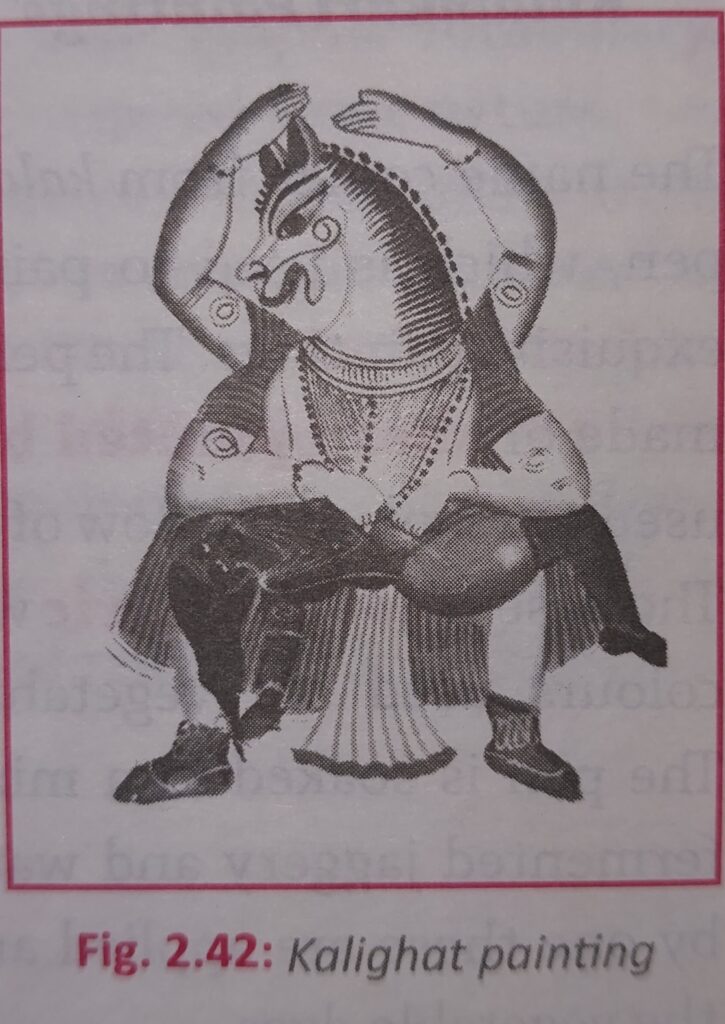
The Kalighat paintings were developed during the 19th century by the rural migrants who settled down near the Kalighat temple in Kolkata. They used watercolors mill paper using brushes made of calf and squirrel hair. These paintings originally depicted religious note, especially Hindu God and Goddesses and over time, these paintings showcase social sentiment.
Kalamkari Paintings
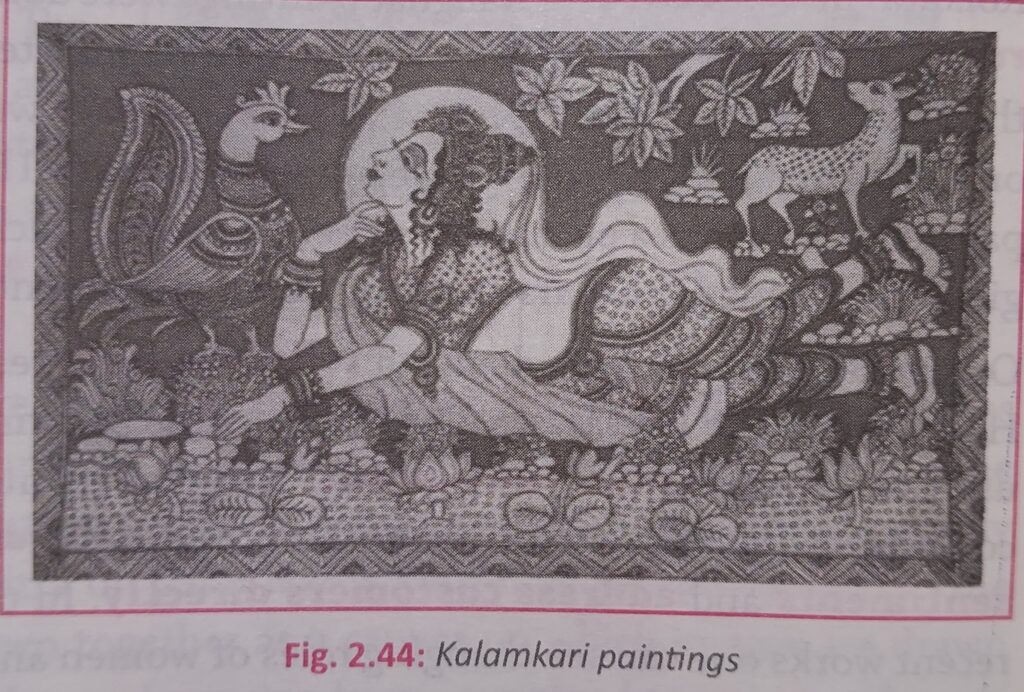
The modern-day state of Andhra Pradesh is the main centre of these paintings. The pen used is made of sharp painted bamboo, used to regulate the flow of colors. The base of these paintings is of cotton fabric. And the colors used in these paintings were made of vegetable dyes. The main themes of these paintings were inspired by the Hindu mythology.
Warli Paintings
The Warli paintings mainly developed on the modern-day border of Gujarat and Maharashtra and their origin can be traced back to 2500-3000 BC. These paintings have a close resemblance to mural paintings of Bhimbetka caves of Madhya Pradesh. These ritualistic paintings have a central motif of chaukat which is surrounded by scenes portraying fishing, hunting, farming, dances, animal, trees and festivals.
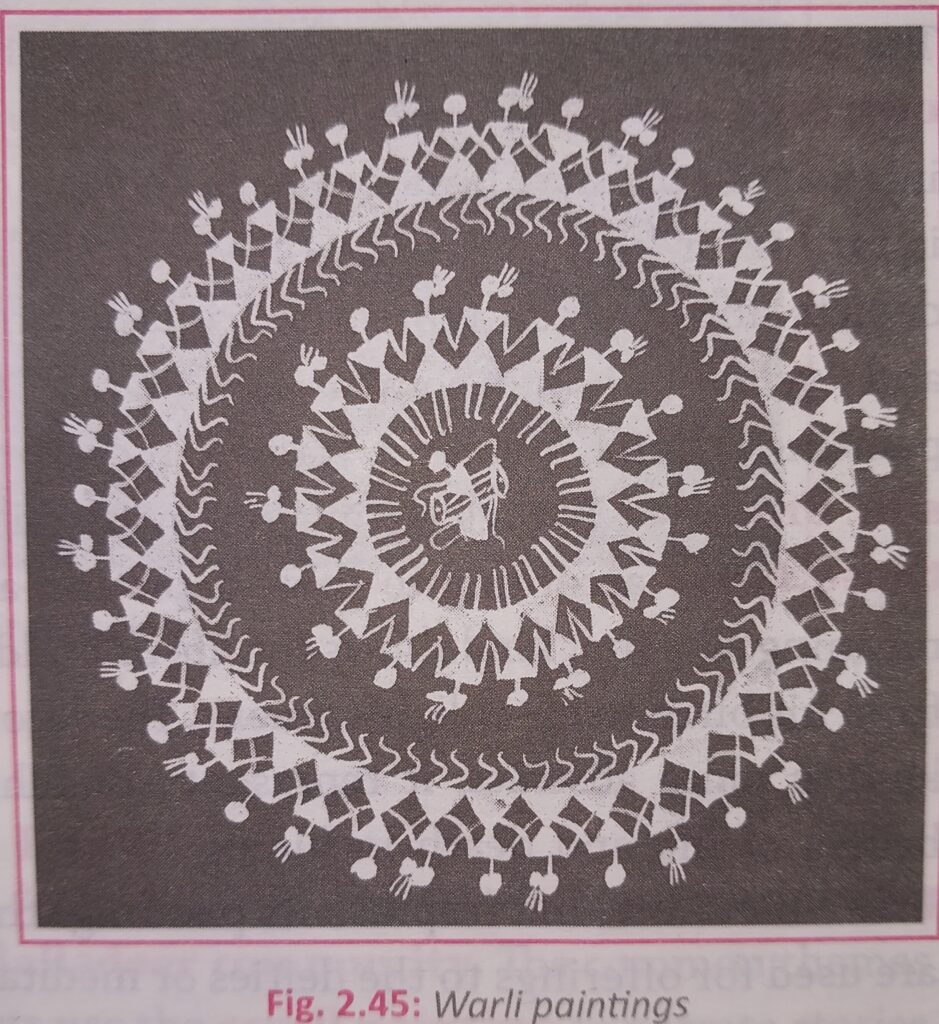
These paintings done on walls and typically have graphical representation of triangle, circle and a square. The base of these paintings is made of mixture of mud, branches, and cow dung that gave a red ochre color and for painting only white pigment (mixture of gum and rice powder) is used.
Other Folk Paintings
Thangka folk paintings are popular art in the modern-day states of Sikkim, Himachal Pradesh, Ladakh and Arunachal Pradesh and these paintings depicted the Buddhist traditions. Manjusha paintings, also known as Angika art, is a popular at in the region of Bhagalpur of Bihar. These paintings are executed on boxes of jute and paper. Cheriyal scroll paintings is a type of Nakashi art, belongs to state of Telangana. Hindu epics and Puranic stories are common themes of Cheriyal paintings.

Pithora paintings are famous art of tribal communities of Gujarat and Madhya Pradesh. They built on walls of houses to bring peace and prosperity and horses are most common depicted animal. Saura paintings, made by the Saura tribe of Odisha, are wall mural paintings. The humans are painted in geometrical and stick like shape. Phad painting is a scroll art of Rajasthan and these are religious in nature and comprises drawings of locals. Local deities; Pabuji and Devnarayan, draw frequently in these paintings.
Thus, there are numerous folk paintings, and many of them are nationally recognized by the Indian government, which provides Geographical Indicator (GI) tags for them.

Pingback: Indian Music – History and Anatomy - historylover.in